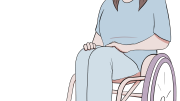As most gym junkies can attest, the gym gets noticeably busier in January. Not only are more people visiting the gym trying to purge the excesses of the holidays and trying to compensate for missed workouts during holiday gym closures, but there is also a spike in new members joining the gym.
You know it’s the new year because you are blinded by all the shiny white new runners being sported by people determined to start exercising. You also know it’s the new year because your favourite exercise bike that you use at the beginning of every workout is being used by one of those people wearing shiny white runners. The good news, or at least the truth, is that by the end of January most of those new running shoes will be sitting at the backs of closets under piles of clothes as people realize how much work a workout actually is. It is unfortunate, but at least you get your bike back.
As we welcome the beginning of a new year, so many people add exercising to their list of new year’s resolutions. That is important and ambitious, but it is also possible to exercise too much.
If you do go to a gym often enough to have pieces of workout equipment that you affectionately consider your own, it may be time to consider what it means to over-exercise. There are both physical and psychological components to over-exercising and both are complexly related, exposing the difficulty of actually diagnosing the problem.
Physically, symptoms that indicate that you are putting too much pressure on your body include consistently sore muscles, sleep disturbances, lack of motivation, decreased appetite, sudden weight loss and increased incidences of injury. Any or all of these signs translate to your body needing you to exercise a little bit less.
These physical symptoms can be obvious and intrusive indicators that you are over-exercising. Your body is literally telling you to slow down. What can be more insidious, however, are the psychological aspects of over-exercising. Also known as compulsive exercising, this phenomenon is considered an addiction and has been categorized alongside eating disorders.
Compulsive exercisers often lack clear fitness goals and tend to workout longer and more frequently than necessary. It has been speculated that people who compulsively exercise are addicted to the chemical reactions in their bodies caused by exercise. Interestingly, it has also been found that many over-exercisers have inaccurate opinions about their bodies, often perceiving themselves to look heavier than they actually are. This is the same distorted body perception that fuels many eating disorders.
The psychological aspects of compulsive exercising are also a matter of a person’s perspective on their exercise regimen. The general guideline indicating whether you are exercising too much or not is reflected in how high of a priority you place exercising in your life. You should be concerned about over-exercising if you prioritize workouts over friends and family, and if your friends and family are concerned that you exercise too much, this may be another sign. Remember, exercise is only healthy when it is not taken to an extreme.
As images of ideal bodies that are unrealistic for the majority of people permeate the media, it is not uncommon to see women reading fashion magazines featuring ultra-thin models at the gym while they work out. This common scene shows a strong correlation between the media’s glorification of thinness and compulsive exercising. What is not so easy to see is the line between healthy exercising and over-exercising. For some people, it may be time to take a step back and evaluate which side of the line we find ourselves on.



